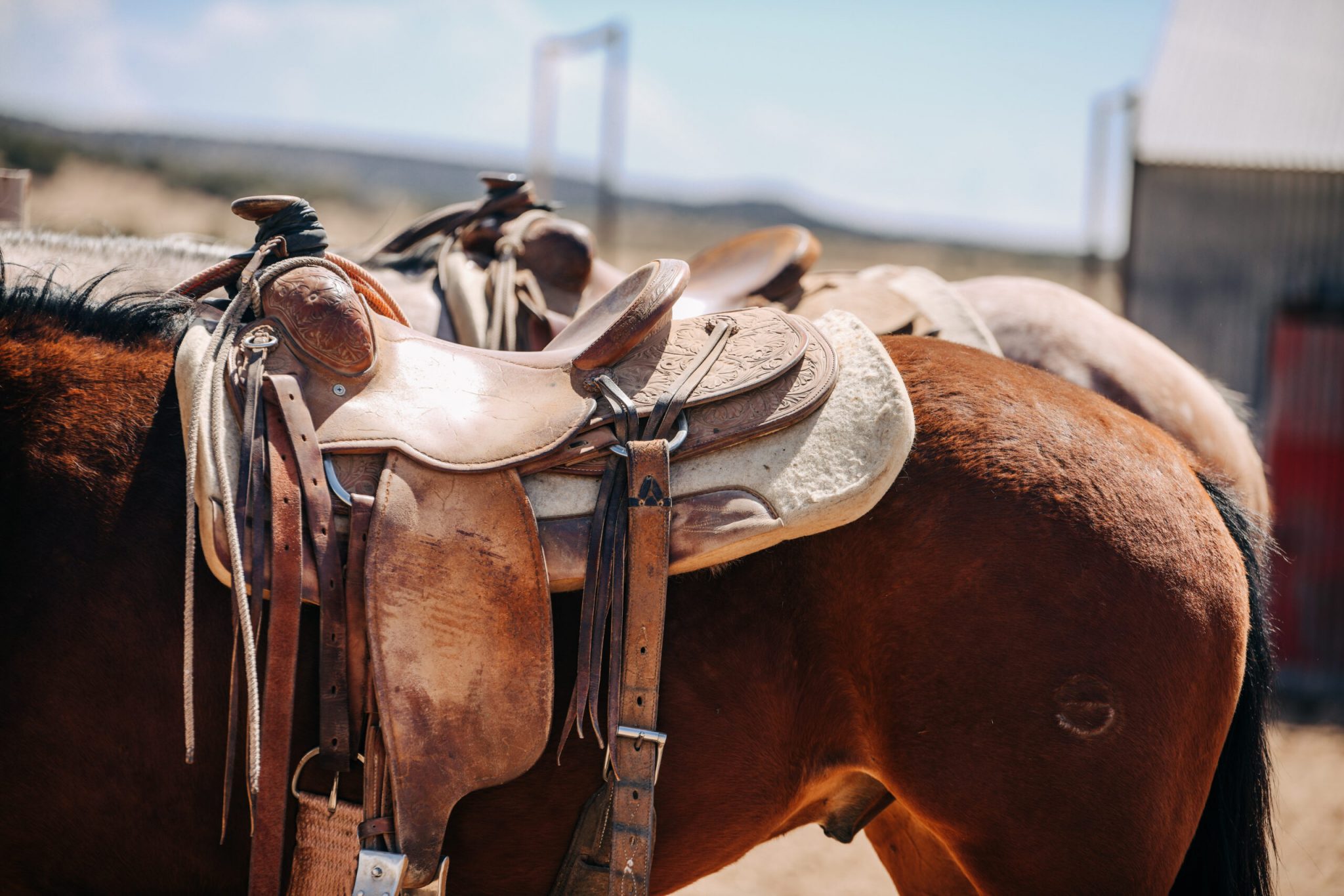This article is part of our Saddle Up With Comfort Awareness Campaign, brought to you by 5 Star Equine Products.
A well-fitted saddle is key in keeping your horse comfortable. However, your saddle pad is an important player as well. It can even help keep your horse cool in the hottest of weather.
Could a wool saddle pad be right for you? We’ve outlined some considerations if you’re thinking of making the switch.
Breathability and Comfort
If you’re on the trail for long days, working cows, or spending hours in the saddle, the importance of breathability can’t be overstated. Since wool is a natural material, it offers excellent breathability and moisture-wicking characteristics.
Wool has natural moisture-wicking properties. This means it can absorb and wick away sweat and moisture from the horse’s back during exercise. The tiny wool fibers are called ‘crimp’ and they create air pockets to allow air flow across his back. This can help keep him cool and dry. These same fibers can provide an insulting effect in cold weather, and keep your horse comfortable during frosty rides, as well.
Resilience
Wool saddle pads are resilient and with proper care, can last for many years. The natural fibers are also resistant to compression over time, but still provide such cushion that they can mitigate pressure points and allow you to cinch your saddle tight without discomfort. A wool pad can provide your horse with cushioning and padding, that will keep him comfortable on long rides. It is worth noting though, that the key to comfortability for your horse is ultimately a well-fitting saddle.
A wool saddle pad that is made from 100% virgin wool, has a center cortex that can absorb up to 30% of its dry weight in moisture, before it will start to feel damp. The fibers can stretch and then bounce back to normal. This allows the pad to maintain its shape and structure for years.

Easy to Clean
An important part of maintaining your wool saddle pad, however, is keeping it clean. Accumulated sweat and dirt that dries on the underside can make the pad hard and take away its cushioning properties. Many pad manufacturers recommend that you clean your wool pad after every 40-50 rides, and it’s an easy job.
Even if you don’t have time to do a deep clean with water, a quick brushing can help. Use a rubber curry comb to remove hair from the underside, for a quick clean. Doing so will allow your wool pad to do its job of wicking moisture and providing soft cushion for your horse’s back. A handy general rule to follow is, if your pad is hard to the touch, it’s time to use water to give it a good cleaning.
(Avoid using scalding hot water, as it can damage the wool fibers!)
Nature-Made
We’re all about sourcing sustainable materials, and since wool is a naturally occurring and renewable resource, that’s an added benefit. When you’re putting a material in close contact with your horse’s skin all day, there is something to be said for using natural fibers.
Wool pads will naturally begin to conform to your horse’s back and are known to stay in place even during hard workouts. You can count on the natural fibers to be pretty odor resistant as well and is naturally anti-microbial.
If you decide to go with a 100% wool pad, go with a reputable maker or company that uses quality materials. Read carefully to ensure that you are opting for pad made from materials that can stand the test of time and use. At the end of the day, a well-fitting saddle will determine if your horse is comfortable. However, the importance of a quality saddle pad cannot be overlooked.






